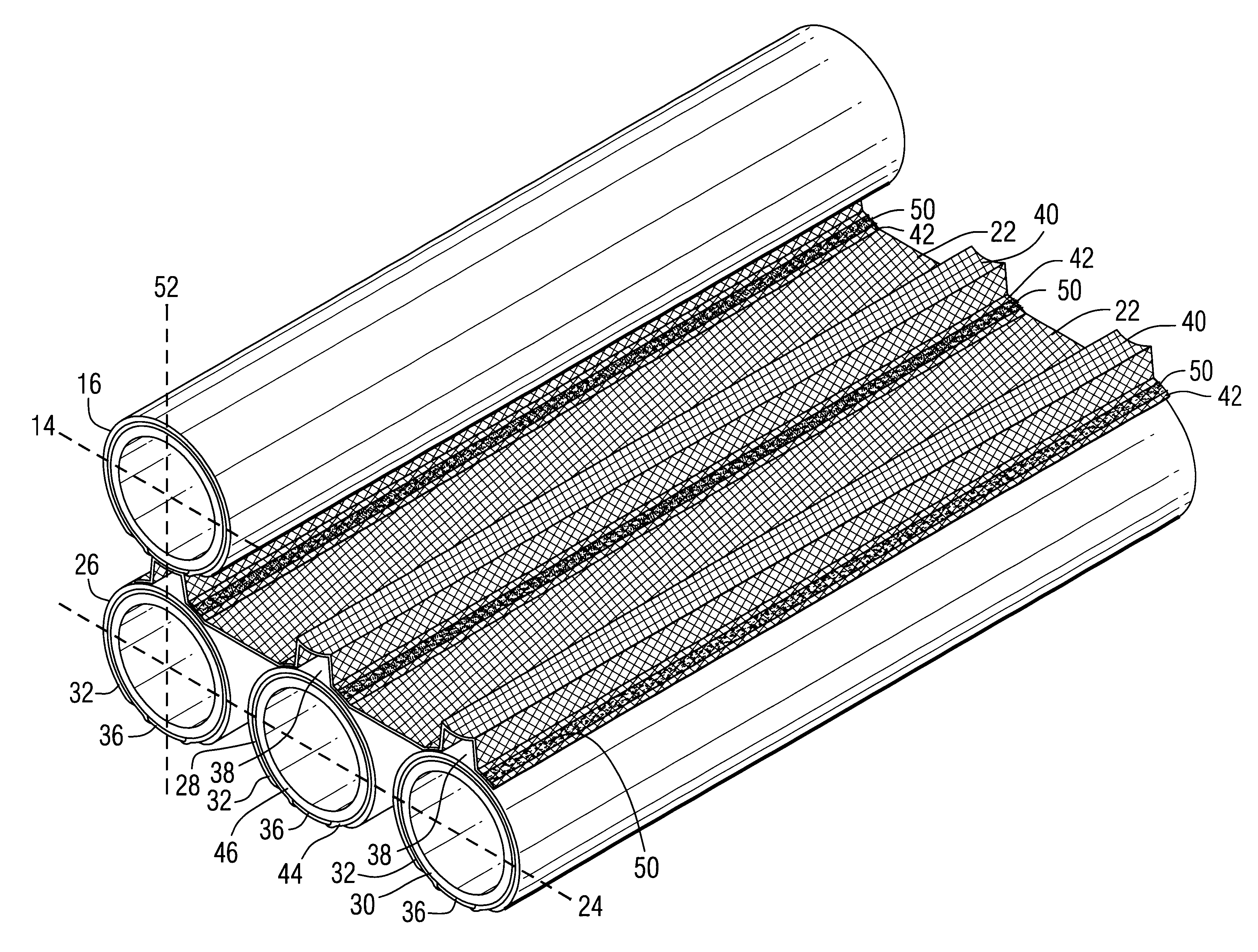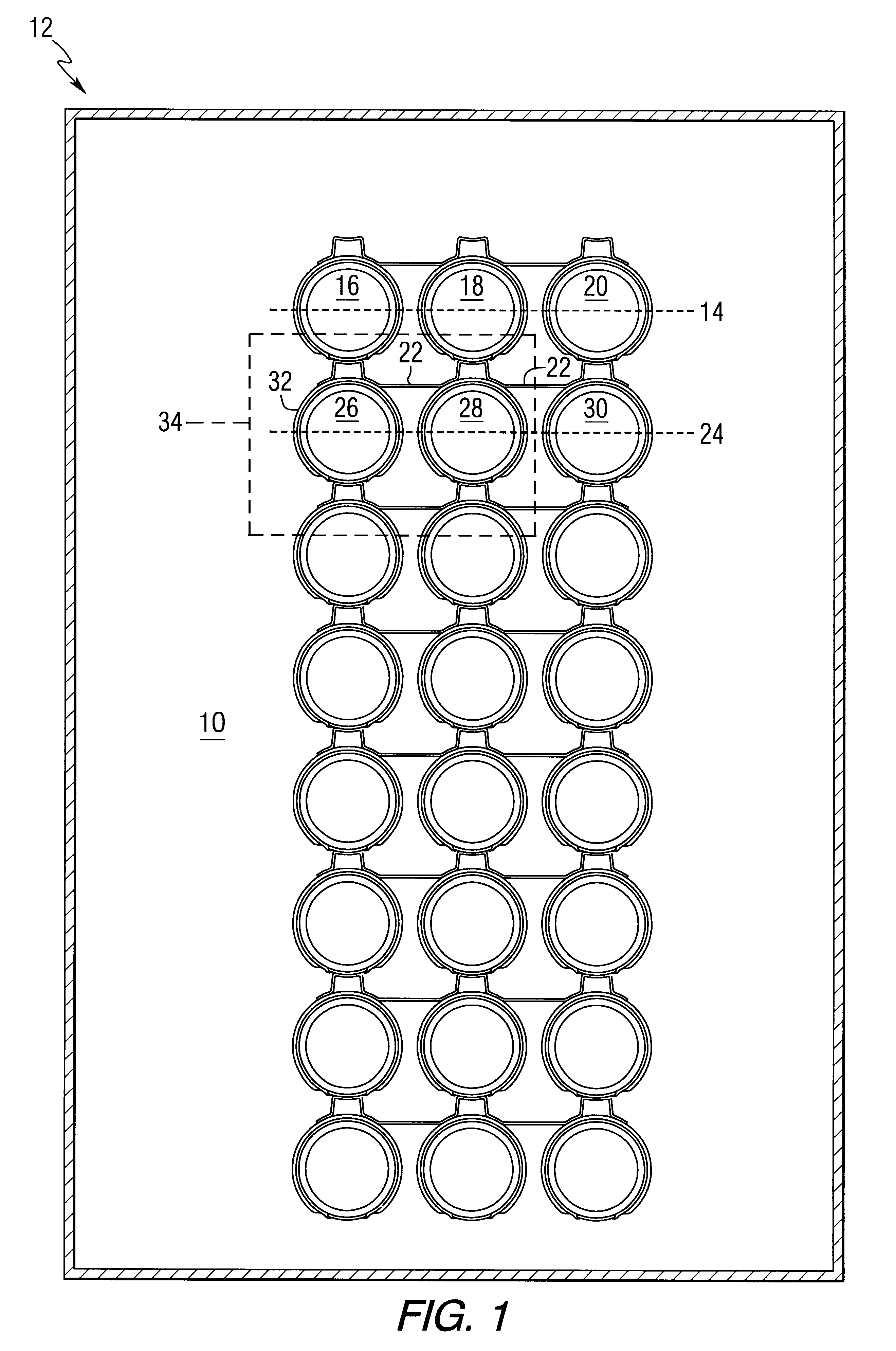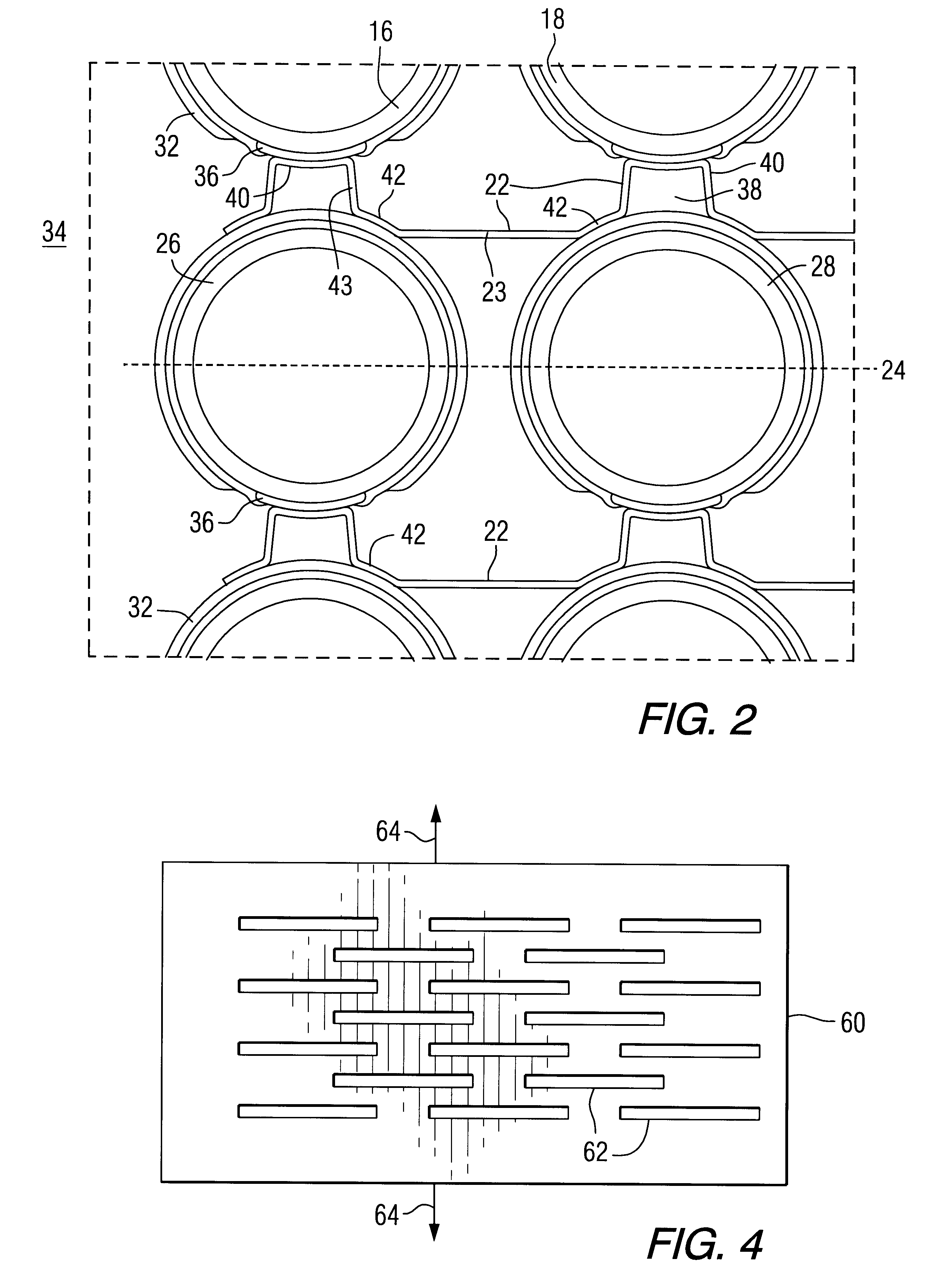Expanded nickel screen electrical connection supports for solid oxide fuel cells
a technology of electrical connection support and nickel screen, which is applied in the direction of cell components, cell component details, electrochemical generators, etc., can solve the problems of reducing the gaseous fuel flow between the outer electrodes of the cells, and affecting the efficiency of the cell
- Summary
- Abstract
- Description
- Claims
- Application Information
AI Technical Summary
Problems solved by technology
Method used
Image
Examples
Embodiment Construction
Expanded nickel mesh, having diamond-shaped openings, about 65% porous and 0.05 cm (0.02 inch) thick, was annealed and then placed in a die mold having a corrugated structure with a crown contour approximated to fit the contour of tubular solid oxide fuel cells to be made into a bundle similar to that shown in FIG. 1. Each corrugated mesh structure was coated at the crown and shoulder with a bead of epoxy cement admixed with about 20 wt. % small nickel particles, as shown in FIG. 3. The molded mesh was then layered between rows of three fuels cells, to contact interconnections and fuel electrodes (as shown in FIG. 2), making columns eight fuel cells high. Hot air was blown through the spaces between the cells and into the spaces within the crowns of the mesh to dry the epoxy. The bundle was then placed in a sintering oven at 1100.degree. C. for two hours to vaporize the epoxy and form a nickel particle-to-mesh bond. Upon cooling, the bundle was tested and found to have excellent per...
PUM
 Login to View More
Login to View More Abstract
Description
Claims
Application Information
 Login to View More
Login to View More - R&D
- Intellectual Property
- Life Sciences
- Materials
- Tech Scout
- Unparalleled Data Quality
- Higher Quality Content
- 60% Fewer Hallucinations
Browse by: Latest US Patents, China's latest patents, Technical Efficacy Thesaurus, Application Domain, Technology Topic, Popular Technical Reports.
© 2025 PatSnap. All rights reserved.Legal|Privacy policy|Modern Slavery Act Transparency Statement|Sitemap|About US| Contact US: help@patsnap.com



